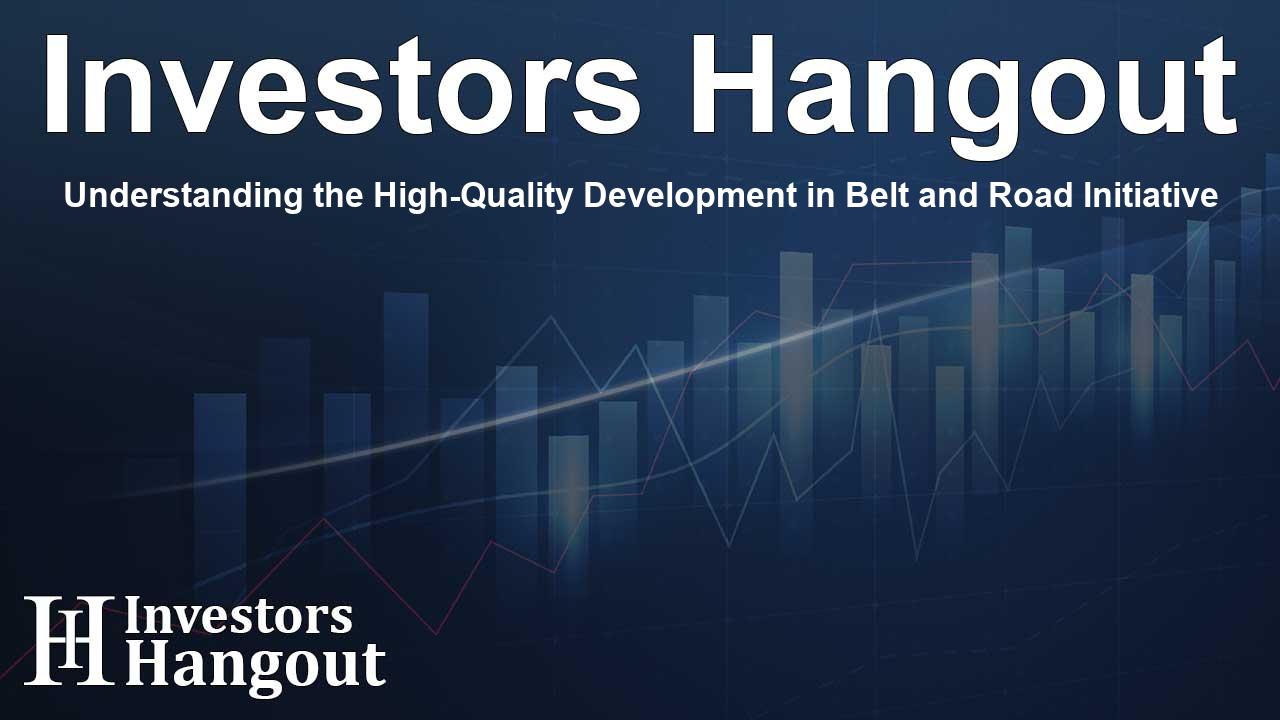Understanding the High-Quality Development in Belt and Road Initiative

Understanding the High-Quality Development in Belt and Road Initiative
Last year marked an important milestone for the Belt and Road Initiative (BRI), a monumental project that has transformed many aspects of international collaboration in infrastructure and economic development. The BRI isn't just a series of construction projects; it's a fundamental shift in how participating countries, including Pakistan, engage economically and socially. The China-Pakistan Economic Corridor (CPEC) stands out as a significant element of this initiative.
Economic Growth and Opportunities
Pakistan, a country of nearly 250 million people, has seen its landscape change dramatically due to the investments linked with the BRI. These developments have not only improved infrastructure but have also elevated the quality of life for many. Investments have generated over $46 billion, leading to over 200,000 jobs. One can't overlook the impact these projects have on essential sectors like electricity and transportation, which are critical for economic growth.
A Personal Insight into CPEC's Impact
During a recent Q&A, Zoon Ahmed Khan, a researcher specializing in international relations, highlighted the groundbreaking changes brought about by BRI projects, particularly in transportation. For instance, the first metro line in Pakistan, part of CPEC, has brought accessible public transport to communities that previously had limited options. Khan's words resonate with many who now experience newfound mobility.
Transitioning to High-Quality Development
The BRI is evolving, emphasizing high-quality development rather than merely focusing on infrastructure. This shift aims to promote sustainable growth while taking into consideration the unique challenges faced by participating nations. The focus is now on creating frameworks that are context-sensitive, allowing countries to curate development paths that best fit their needs and environments.
Building Context-Specific Solutions
Khan elaborated on this transformative phase, explaining that high-quality development encourages countries to work collaboratively to exchange solutions tailored to specific local contexts. This approach ensures that investments are not only economically viable but also socially and environmentally responsible.
Global Connectivity and Sustainable Growth
The community-centered partnerships within the BRI continue to forge pathways toward sustainable development. By emphasizing high-quality partnerships, the initiative assists countries in their quest for sustainable growth and economic collaboration on a global scale. The benefits to local populations are significant, paving the way for improved living conditions and access to opportunities that were previously out of reach.
Thus, high-quality development under the Belt and Road Initiative is more than just a policy change; it symbolizes a commitment to fostering sustainable and resilient economies that respect and utilize local resources and contexts effectively.
Frequently Asked Questions
What is the Belt and Road Initiative?
The Belt and Road Initiative (BRI) is a global development strategy adopted by China aimed at enhancing regional connectivity and cooperation. It encompasses infrastructure projects and various collaborations across participating countries.
How does the BRI impact economic growth?
The BRI facilitates significant investments in infrastructure, leading to job creation and improved local economies, thereby fostering economic growth in participating countries.
What is high-quality development in the BRI context?
High-quality development focuses on sustainable growth, aligning investment strategies with the unique socio-economic contexts of participating countries to maximize benefits.
Who are the key stakeholders in the BRI?
Key stakeholders include participating countries, international organizations, and various private-sector entities that collaborate to ensure successful project execution.
What are some examples of successful BRI projects?
Examples include Pakistan's metro line projects and energy initiatives that enhance electricity supply, demonstrating how the BRI improves transportation and infrastructure across borders.
About Investors Hangout
Investors Hangout is a leading online stock forum for financial discussion and learning, offering a wide range of free tools and resources. It draws in traders of all levels, who exchange market knowledge, investigate trading tactics, and keep an eye on industry developments in real time. Featuring financial articles, stock message boards, quotes, charts, company profiles, and live news updates. Through cooperative learning and a wealth of informational resources, it helps users from novices creating their first portfolios to experts honing their techniques. Join Investors Hangout today: https://investorshangout.com/
Disclaimer: The content of this article is solely for general informational purposes only; it does not represent legal, financial, or investment advice. Investors Hangout does not offer financial advice; the author is not a licensed financial advisor. Consult a qualified advisor before making any financial or investment decisions based on this article. The author's interpretation of publicly available data shapes the opinions presented here; as a result, they should not be taken as advice to purchase, sell, or hold any securities mentioned or any other investments. The author does not guarantee the accuracy, completeness, or timeliness of any material, providing it "as is." Information and market conditions may change; past performance is not indicative of future outcomes. If any of the material offered here is inaccurate, please contact us for corrections.